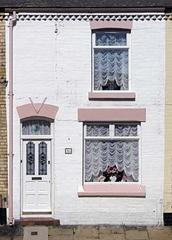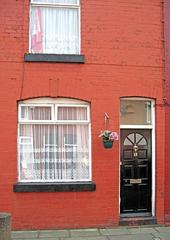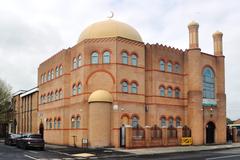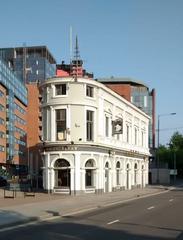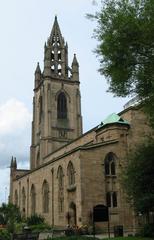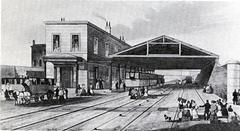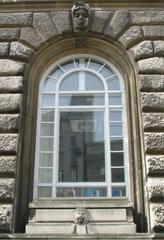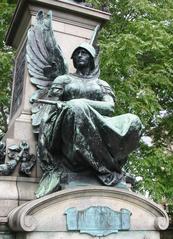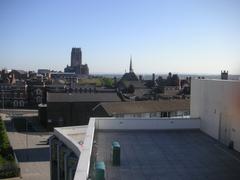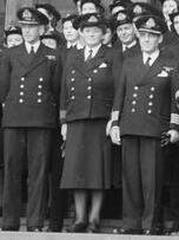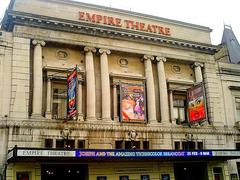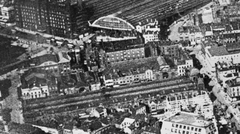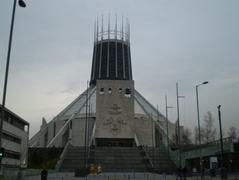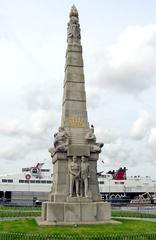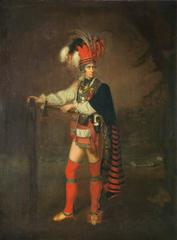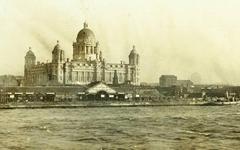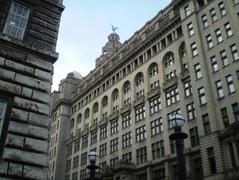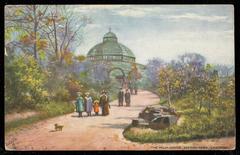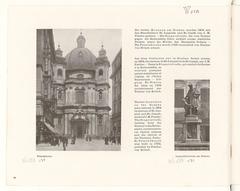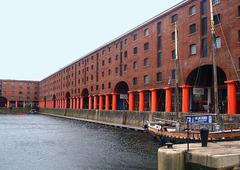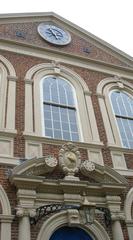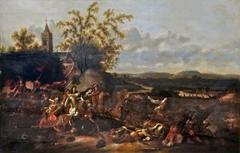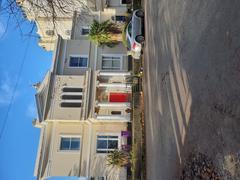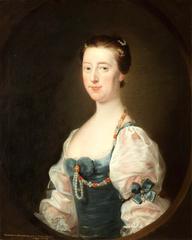West Derby Cemetery Liverpool: Visiting Hours, Tickets, and Guide to Historical Sites
Date: 04/07/2025
Introduction
West Derby Cemetery, situated in the historic West Derby district of Liverpool, stands as a testament to the city’s Victorian legacy and its diverse social, religious, and urban development. Established in 1884, the cemetery blends tranquil landscaped grounds, remarkable architectural features, and a rich tapestry of stories—serving as both a place of remembrance and a valuable historical site. Whether you are a history buff, a genealogist, or someone seeking a peaceful retreat, West Derby Cemetery offers an immersive experience into Liverpool’s past.
For planning your visit, information on opening hours, accessibility, and historical highlights can be found on the Liverpool City Council website and Historic Liverpool.
Contents
- Historical Background
- Origins and Establishment
- Architectural and Heritage Features
- Social and Urban Significance
- Notable Burials and Memorials
- Modern Use and Preservation
- Practical Visitor Information
- Visiting Hours and Admission
- Getting There and Accessibility
- Amenities and Nearby Attractions
- Guided Tours and Special Events
- Frequently Asked Questions (FAQ)
- Summary and Recommendations
- Further Reading and Official Links
Historical Background
Origins and Establishment
By the late 19th century, Liverpool’s rapid population growth and urban expansion led to overcrowded burial grounds. In response, the West Derby Burial Board acquired 151 acres of Lower House Farm, and, in 1884, West Derby Cemetery officially opened to the public. The inaugural ceremony underscored Liverpool’s religious diversity, with Protestant, Catholic, and Nonconformist clergy participating (Sarsfield Memorials Liverpool).
The cemetery’s design was shaped by architect F. B. Payton and landscape designer William Wortley, proponents of the Victorian “garden cemetery” movement. Initially, only 70 acres were developed for burials, with the remainder leased for agriculture (Liverpool City Council).
Architectural and Heritage Features
West Derby Cemetery is distinguished by its Grade II listed chapels and entrance buildings, constructed in the Victorian Gothic style using local sandstone. The grounds are divided into denominational sections for Anglicans, Roman Catholics, Nonconformists, and Jews, each with dedicated chapels and burial areas (Jewish Soldiers in the First World War). This inclusive approach reflected Liverpool’s pluralistic society and remains a defining feature of the cemetery.
Social and Urban Significance
The cemetery’s establishment coincided with West Derby’s transformation from a rural village to a prosperous suburb. In the 19th century, West Derby’s population exceeded 50,000, with affluent families and international consuls building homes in the area (Historic Liverpool). The cemetery’s location near Croxteth Hall and historic village gates ties it to Liverpool’s deep medieval roots.
Notable Burials and Memorials
West Derby Cemetery is the final resting place for a diversity of individuals, including:
- Peter Craven, world speedway champion (Sarsfield Memorials Liverpool)
- Tommy Burns, champion diver
- Jindrich Bartos, Czech Battle of Britain veteran (Jewish Soldiers in the First World War)
- Over 400 Commonwealth war graves from WWI and WWII, with names of the unmarked commemorated on Screen Wall memorials (Wikipedia; CWGC)
The diversity of surnames and epitaphs reflects Liverpool’s cosmopolitan heritage and waves of migration.
Modern Use and Preservation
Although new full-body burial plots are no longer available, West Derby Cemetery offers spaces for cremated remains and continued use of existing family graves (Liverpool City Council). The site is maintained by Liverpool City Council, with community support from groups like the West Derby Society, which organizes heritage walks, educational events, and conservation projects.
Practical Visitor Information
Visiting Hours and Admission
- Opening Hours: Daily from 8:00 AM to 6:00 PM (April–September); 8:00 AM to 4:30 PM (October–March)
- Admission: Free; no ticket required for general visits. Guided tours and special events may require advance booking.
Check the Liverpool City Council website for up-to-date opening times and event information.
Getting There and Accessibility
- Location: Lower House Lane, West Derby, Liverpool, L11 2SF
- By Public Transport: Multiple bus routes connect the city center to West Derby and Croxteth.
- By Car: On-site parking is available but may be limited at peak times.
- Accessibility: Most main paths are paved and suitable for wheelchairs and mobility aids; some older areas have uneven ground.
Amenities and Nearby Attractions
- Facilities: Benches, water taps, and well-maintained paths; no public toilets on-site.
- Nearby Attractions: Croxteth Hall and Country Park, West Derby village center, and historic St. Mary’s Church are within easy reach.
- Local Amenities: Cafés, pubs, and convenience stores are available in the surrounding area.
Guided Tours and Special Events
- Guided Tours: Organized intermittently by the West Derby Society and local heritage groups.
- Events: Remembrance ceremonies, educational walks, and volunteer conservation days are occasionally held. Check online listings for details.
Visitor Experience and Tips
- Best Time to Visit: Late spring and summer for vibrant landscapes; early mornings and late afternoons for tranquility.
- Photography: Permitted and encouraged; the Victorian architecture and mature trees offer excellent subjects. Please respect mourners and ongoing services.
- Conduct: Dress respectfully; keep dogs on leads; clean up after pets; maintain a quiet and considerate demeanor.
- Safety: The cemetery is generally safe, with occasional patrols. Report hazards to the council office.
Frequently Asked Questions (FAQ)
Q: What are the visiting hours?
A: Daily, 8:00 AM–6:00 PM (April–September) and 8:00 AM–4:30 PM (October–March). Times may vary seasonally.
Q: Is there an entry fee or ticket required?
A: No, admission is free and open to all.
Q: Is the cemetery wheelchair accessible?
A: Yes, main avenues are paved and accessible, though some older areas may be uneven.
Q: Are guided tours available?
A: Yes, occasionally through the West Derby Society and local groups. Check their website for schedules.
Q: Is there parking on-site?
A: Limited parking is available; consider public transport during busy times.
Q: Can I bring my dog?
A: Yes, dogs are permitted on leads.
Summary and Recommendations
West Derby Cemetery encapsulates Liverpool’s Victorian heritage, religious diversity, and evolving social landscape. With over 400 war graves, notable memorials, and distinct architectural features, the cemetery is a must-visit for anyone interested in history, genealogy, or peaceful contemplation. The site is free to enter, easily accessible, and supported by active community engagement.
Visitor Tips:
- Check opening hours before your visit.
- Explore guided tours for deeper historical context.
- Pair your visit with nearby attractions like Croxteth Hall.
- Download the Audiala app for audio guides and exclusive content.
For further details and updates, visit the Liverpool City Council page and the West Derby Society.
Further Reading and Official Links
- Liverpool City Council – West Derby Cemetery
- A History of West Derby Cemetery – Sarsfield Memorials Liverpool
- West Derby Cemetery – Jewish Soldiers in the First World War
- West Derby Cemetery – Wikipedia
- Historic Liverpool: West Derby Township
- West Derby Society Official Site
- Commonwealth War Graves Commission – West Derby Cemetery
Image Suggestions:
- Victorian chapel at West Derby Cemetery (alt: “Victorian chapel at West Derby Cemetery, Liverpool”)
- Commonwealth war graves with flowers (alt: “War memorials at West Derby Cemetery”)
- Tree-lined pathway inside West Derby Cemetery (alt: “Tree-lined avenue in West Derby Cemetery”)
- Map showing West Derby Cemetery’s location in Liverpool
For interactive maps and virtual tours, consult the official Liverpool City Council website or the West Derby Society.
